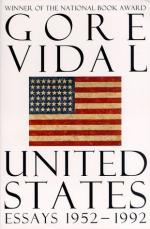|
This section contains 271 words (approx. 1 page at 400 words per page) |

|
"John Horne Burns" (1965) Summary and Analysis
An elegy to his lost novelist friend of World War II, this essay recalls the man who wrote The Gallery published in 1947, which Vidal calls "the best book of the Second War" even considering Vidal's own war novel, Williwaw. Burns, a raw Irishman from Boston, was awakened to life completely when, as a young soldier, he encountered the Galleria Umberto, a teeming "city within a city" in Naples.
"It was the time when cigarettes, chocolate and nylons were exchanged for an easy sex that could become, for a man like Burns, unexpected love," Vidal writes. In that environment, Burns came fully to his senses and fully alive, startled and delighted with the good humored brutality and simple dignity of the Italians. The book was a critical and popular success, but his second novel (Lucifer with...
(read more from the "John Horne Burns" (1965) Summary)
|
This section contains 271 words (approx. 1 page at 400 words per page) |

|




